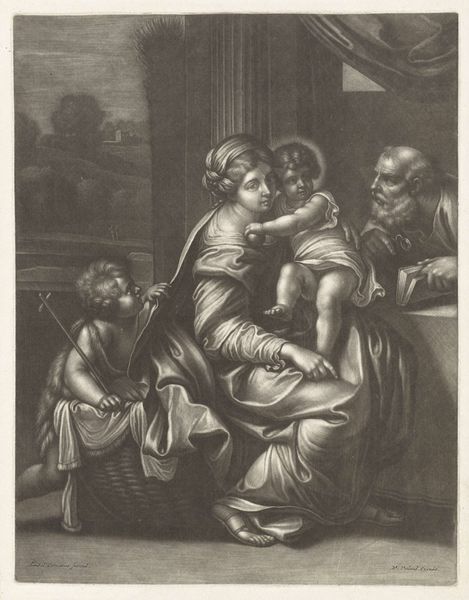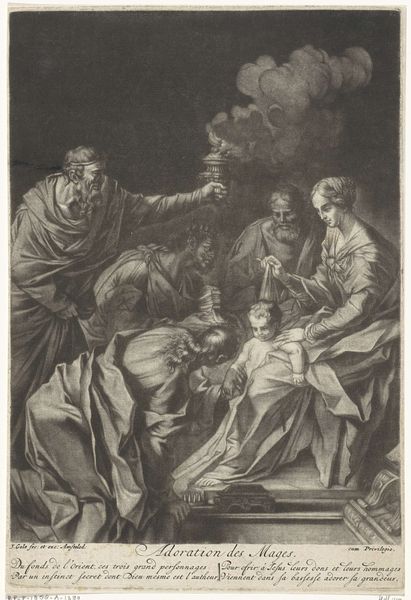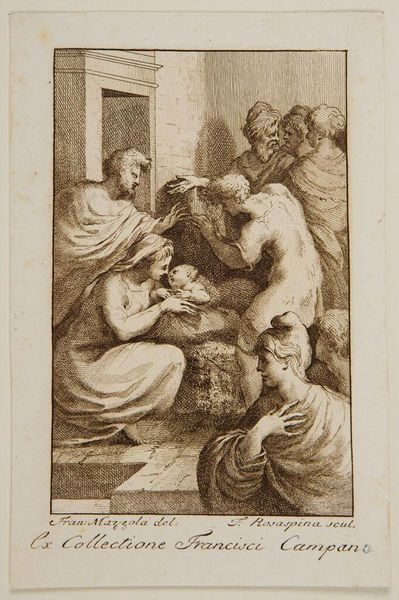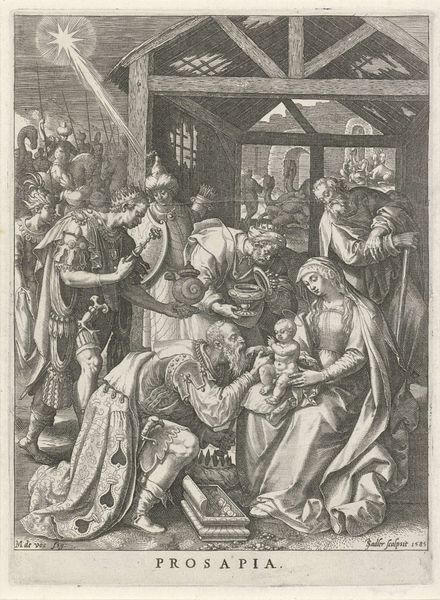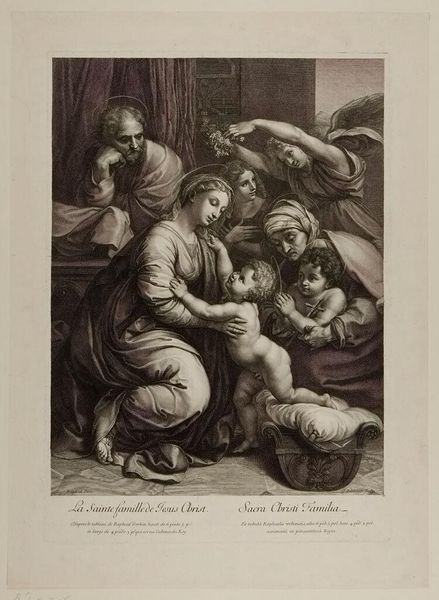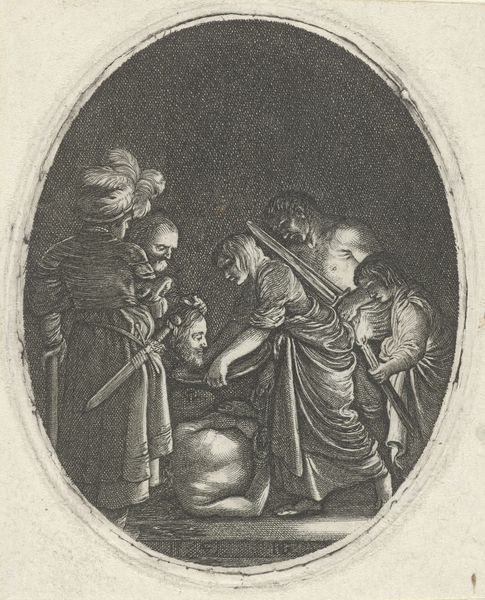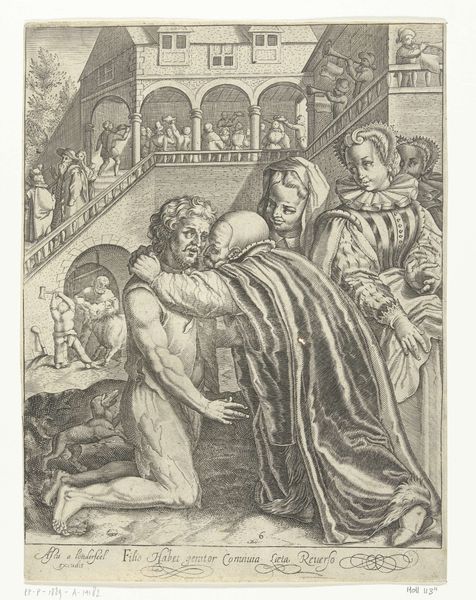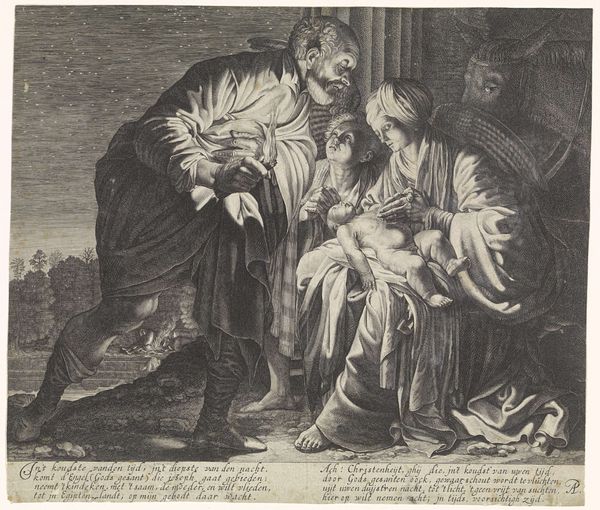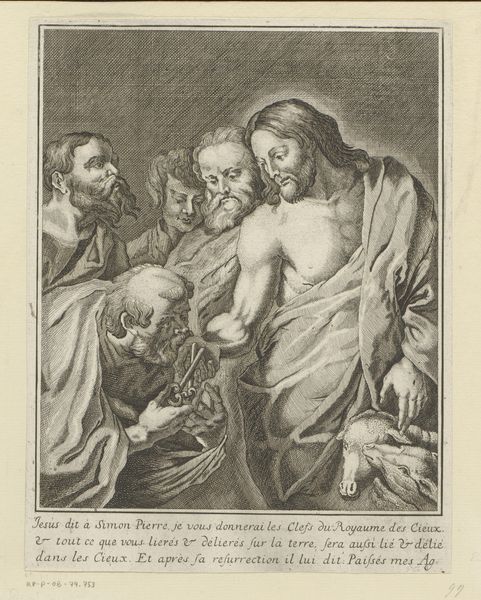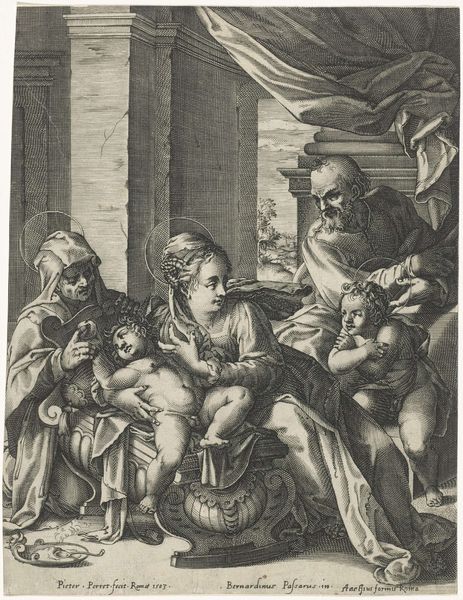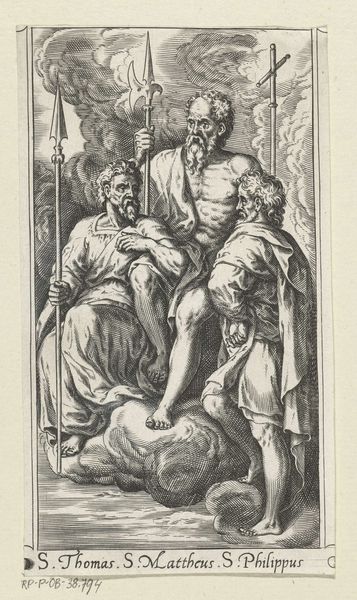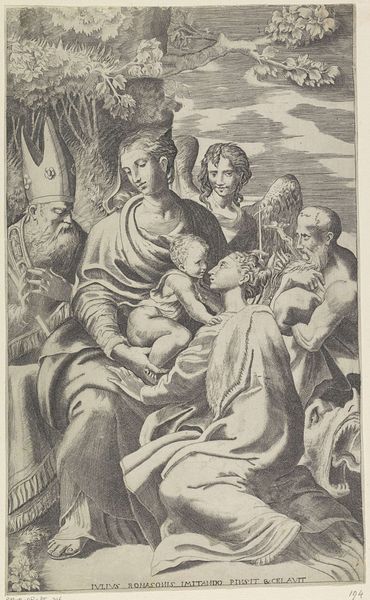
print, engraving
#
portrait
#
baroque
# print
#
figuration
#
portrait reference
#
limited contrast and shading
#
portrait drawing
#
genre-painting
#
engraving
Dimensions: height 304 mm, width 211 mm
Copyright: Rijks Museum: Open Domain
Curator: Welcome. We're looking at "Wonderbare spijziging," an engraving by Jan van Somer, dating from around 1655 to 1700. Editor: It's certainly… atmospheric. The faces emerging from the gloom create a sense of hushed anticipation, maybe even a bit unsettling. Curator: I'm drawn to the economic considerations behind prints like this. The ability to reproduce an image made art more accessible to a wider audience beyond wealthy patrons. Van Somer, as a printmaker, played a role in the dissemination of knowledge and cultural values. Editor: And what values do you think he's conveying through the symbols he deploys here? I see the classic arrangement of figures around a central character. The boy is an interesting one. Holding the pouch that will be the element of the miracle and wearing humble garments that nonetheless carry echoes of ancient robes… a symbol of pure sacrifice perhaps? Curator: Absolutely. And consider the labour involved: the craftsmanship in meticulously etching the plate. The print, though small, carries within it a physical and economic network—paper production, ink-making, the distribution routes. These materials and processes tell a story of consumption. Editor: It does have a very baroque theatricality, even in this muted print form. Note how they are placed; with some on top and in the shadows. A method for van Somer to project a status scale among these biblical individuals? Curator: The shading really creates those visual effects. It suggests a specific skill, an awareness of artistic trends and markets, a product created within specific economic conditions. Editor: You've brought out new points on it that hadn't occurred to me before, especially related to its baroque art status, and this new way of examining images certainly allows us to come up with novel, interesting arguments. Curator: Exactly. It is these insights to our understanding of cultural outputs!
Comments
No comments
Be the first to comment and join the conversation on the ultimate creative platform.
